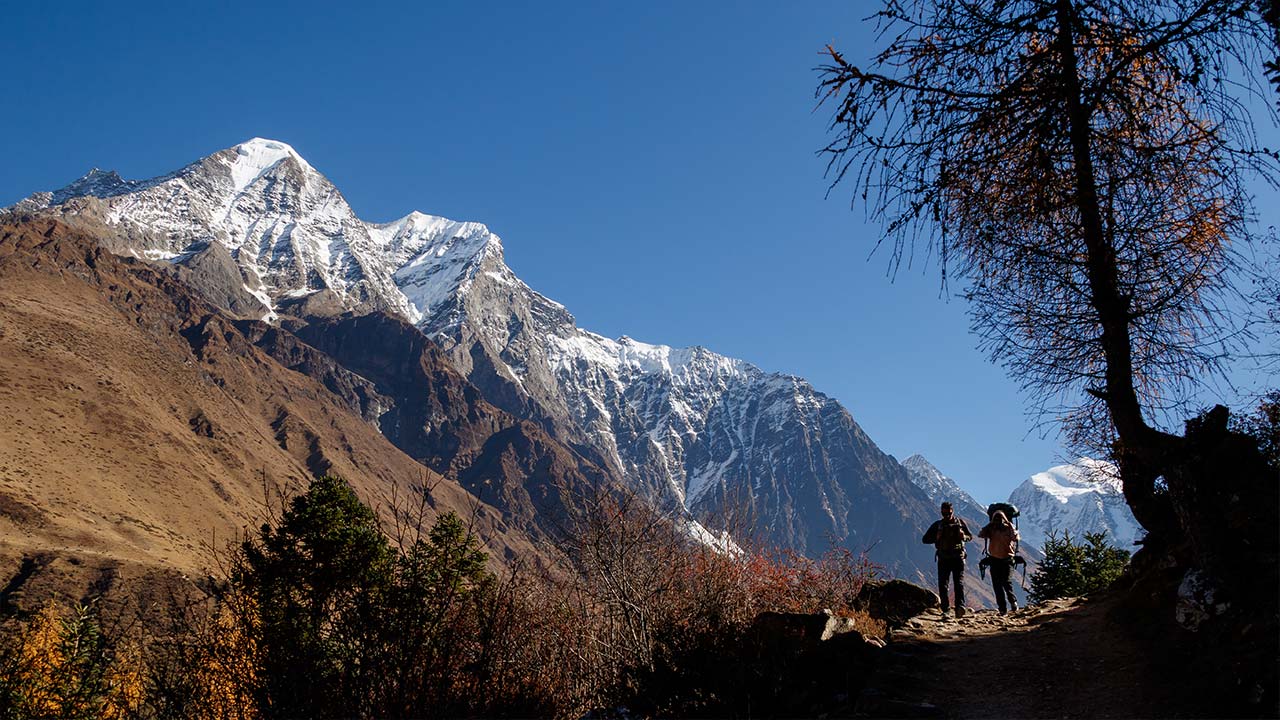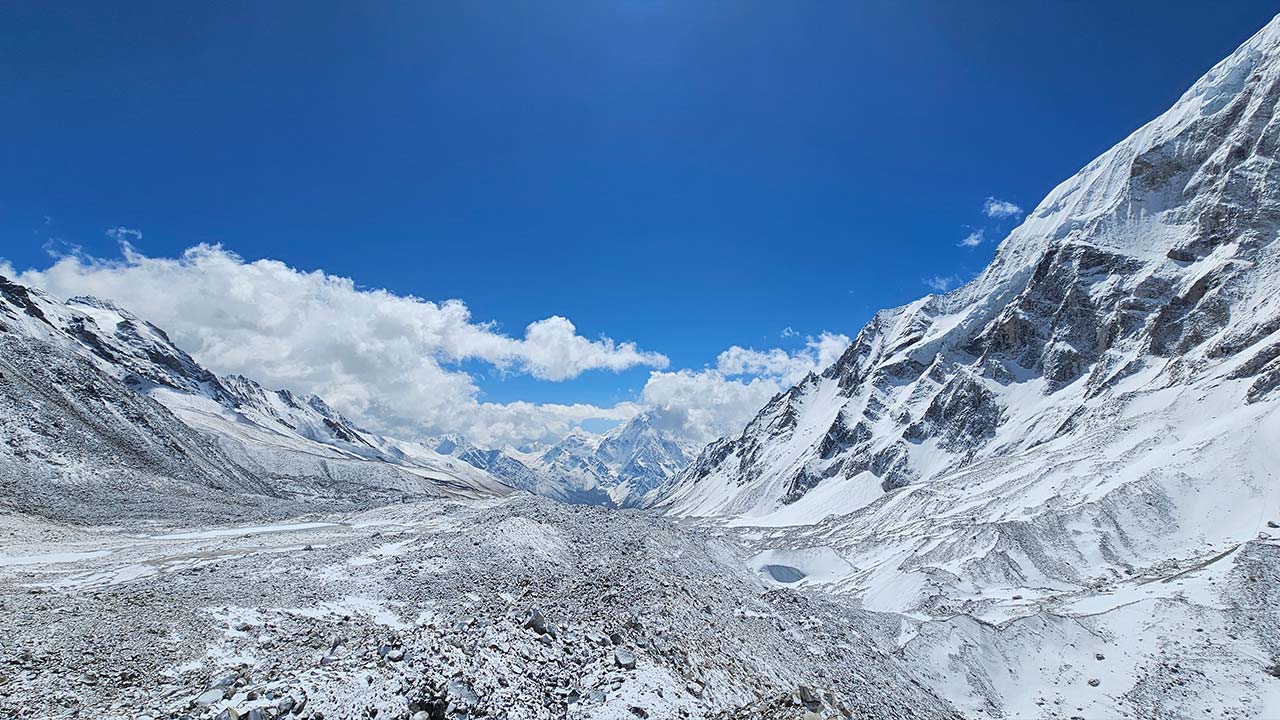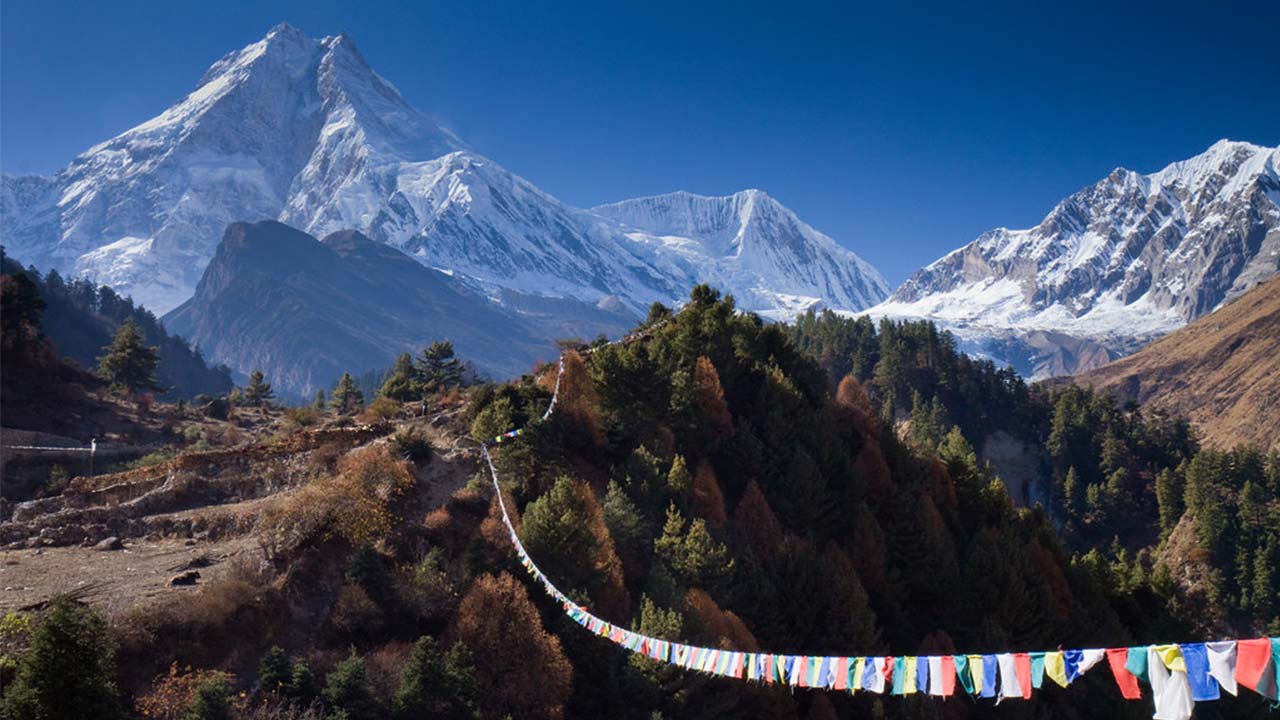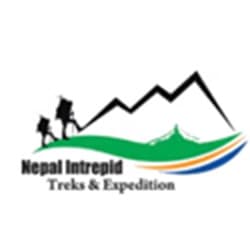Planning for a trek right? Thinking of Manaslu Circuit? Don't worry, you just need curiosity, stamina and maybe a love for yak-butter tea. Chill, you don't need super hero powers. Let's unpack whether this hidden gem of Nepal is as safe as it is stunning.
The Manaslu Circuit Trek is one of Nepal's most popular trekking routes, which is a rewarding yet moderately challenging adventure. It's not a trek meant for new beginners with no trekking experience, but it also doesn't fall into the extreme expeditions category. It is a sweet spot situated in the shadow of Mount Manaslu that is demanding enough to test your endurance. It is manageable if you prepare well, trek in the right season and take things step by step. Manaslu Circuit offers you a raw, off-the-beaten-path adventure that rivals the Annapurna and Everest regions in beauty but in a less crowded setting.
Yet, because of Manaslu's remote location and challenging high passes. Most trekkers wonder and often raise doubts: ‘Is Manaslu Trek safe?’ In short, the answer will be yes, but with many important conditions. In contrast to the Annapurna or Everest treks, where trails are busy and facilities are lavish, but Manaslu region is more secluded and untouched. It means with fewer lodges, limited medical facilities and more craggy routes.
On the other hand, due to its increasing popularity nowadays has brought better infrastructure, reliable teahouses and professional guiding services, making the trek safer than ever. The Nepal government also requires trekkers to travel with a licensed guide and at least two trekkers in a group, which adds an extra layer of security. Manaslu Trek is considered safe with reasonable level fitness and preparation. Having proper planning, acclimatization and choosing the right season will make your trek amazing.
In this blog, we will explore Manaslu trek safety, difficulty and actual realities en route, breaking down what you need to know to trek with confidence.
It's not a trek meant for new beginners, but it also doesn't fall into the extreme expeditions category.

Manaslu Circuit Trek Safety: Risks, Precautions, and Realities
The Manaslu Circuit Trek is often described as one of Nepal's best-kept secrets. Manaslu Circuit is an untouched trail rich in Tibetan-influenced culture. The circuit offers jaw-dropping mountain views, attracting trekkers who seek. Wilderness over crowded routes. The safety question arises in terms of remoteness.
Manaslu Trek safety has drastically improved in the last decade. Now trails are well-marked, sturdy suspension bridges have replaced older ones and risky crossings are less dangerous. You can get reliable food and accommodations in teahouses throughout the route. You should trek with a licensed guide and at least two trekkers; it's Nepal's government requirement to ensure no one ventures into the region alone. It also adds a safety net for navigation, emergencies and cultural communication.
As the trek is incomplete without risk, there are two main concerns in this trek. The first one is altitude sickness, mostly beyond 3,500 meters. Another is seasonal hazards such as landslides during the monsoon ( June - August). Likewise, the winter (December – February) brings icy conditions and a high possibility of snow blocking the Larke La Pass ( 5,106 m ).
If you choose the right season (spring and Autumn), are well prepared and respect the altitude rules, then the trek can be considered safe and rewarding. Manaslu is no longer intimidating wilderness nowadays because of guides, growing infrastructure and a careful approach. It is a challenging but safe Himalayan adventure.
Safety on the Manaslu Circuit: How to Cross Larke La Pass with Confidence?
When people wonder especially about Manaslu Circuit Trek safety, they usually mean crossing that famous Larke La Pass (5,106 m ). It is the highest and most demanding point of the Trek. In this area, altitude, weather and remoteness all come together. If you have a right set of plan, then for you it is achievable and safe.
First, Acclimatization is built into most itineraries. You can spend an extra night in the villages like Sama Gaon (3,530 m) and Samdo (3,860 m). Spending extra nights significantly reduces the risk of altitude sickness for you. Guides will also monitor symptoms closely and adjust the pace if needed.
Second, the Manaslu region is remote, but you can find teahouses all along the trail up to Base Camp and the pass. If there are any emergencies, evacuation is possible by helicopter rescue in these areas. For rescue, you should have proper travel insurance covering the high-altitude trekking. You can find medical posts in larger villages, but treatment is basic, so prevention is the key.
Another safety factor is the weather. If you choose spring (March - May) and autumn (September to November), these seasons provide stable conditions for safe trekking. Trying to attempt the pass in monsoon peak weather significantly increases risk because of landslides, avalanches and blocked trails.
Finally, choosing to trek with a registered guide is not only about legal requirements, but you will get your biggest safety assurance. Guides are trained with first aid, navigation and emergency skills. With the help of all these measures, the Manaslu Circuit Trek is safe for well-prepared trekkers who respect the environment and their own limits.
Manaslu Trek Difficulty
The Manaslu Trek Difficulty is described as “moderate to challenging”. This trek is not a technical climb, but it demands endurance, preparation and a positive mindset from trekkers.
The trek spans roughly 177 kilometers (110 miles). The trek will be completed in 13 - 17 days, depending upon your itinerary. You walk an average of 6 - 7 hours daily, often involving long ascents and steep descents. Manaslu Trek has a lot of stone stairs, suspension bridges and narrow mountain paths, which require good balance and stamina.
The biggest physical challenge for trekkers comes at the Larke La Pass (5,106 m ). At this altitude, oxygen levels drop, which makes your small efforts feel harder. Cold temperatures and possible snow also add to more difficulties in your trek. Most of the trekkers complete the crossing successfully with the proper acclimatization and pacing.

Another factor is remoteness. Manaslu Circuit Trek is less commercialized compared with Annapurna and Everest. You will find fewer teahouses and limited facilities in these trails. Remoteness also adds charm to a trek where trekkers need to be more self-reliant and comfortable with basic accommodations.
As one question may be popping out in your head: Who is this trek suitable for? As for the answer, this trek is suitable for trekkers with good physical fitness and some prior experience in multi-day hikes. You don't need to be a professional mountaineer, but you should do preparation like cardio, strength training and long hikes with a backpack. Preparation like this will make your journey far more enjoyable.
In summary, the Manaslu Trek is challenging but manageable. This trek will reward you with wild landscapes and authentic culture in exchange for your efforts.
Tips to stay safe on the Manaslu Trek
Trekking on the Manaslu Trek can be one of the most rewarding adventures in Nepal. Safety should always come first. Here are some of the essential tips that helps you to ensure a safe and enjoyable journey:
-
Trek with a Licensed Guide: As the Nepal Government requires all trekkers to hire a guide for the Manaslu region. Beyond the legal aspect, guides will provide navigation, cultural insights and emergency support for trekkers.
-
Acclimatize Properly: During a trek, you should acclimatize properly. On the Manaslu Trek plan for rest days in Sama Gaon ( 3,530 m ) and Samdo ( 3,860 m ) before crossing the pass. This will reduce the risk of altitude sickness. You should always follow the “Climb high, Sleep low” principle and ascend gradually.
-
Choose the Right Season: To enjoy and take full advantage of the trek, you should select the right time. Spring ( March - May) and Autumn ( September - November) are the safest times to trek . You should always avoid monsoon season landslides and slippery trails will add more risk. Avoid peak winter because you have to face challenges like snow-blocked passes and extreme cold weather.
-
Carry the Right Gear: You should wear layered clothing, use Trekking poles and good boots. You should carry a quality sleeping bag. Pack a first aid kit, water purification tablets and a headlamp in your backpack.
-
Stay Hydrated & Eat Well: You should drink plenty of water before, during and after the trek to combat altitude effects. You should fuel your body with hearty meals like Dal Bhat. You should strictly avoid alcohol and smoking at higher altitudes.
-
Insurance is Non-Negotiable: you should always purchase travel insurance during the trek, which covers high altitude trekking and helicopter evacuation. This could be life-saving in emergencies.
By following these precautions, the Manaslu Circuit Trek becomes both safe and unforgettable. This trek offers you adventure without unnecessary risks.
Tips from Experienced Trekkers
No matter how much research you do, there is nothing like learning from those who have already walked the Manaslu Circuit themselves. Those who have experienced these trails often share simple yet invaluable advice that can make your journey both safer and more enjoyable.
-
Importance of Pacing: The most common tip for all those who are planning for trek is “Don't Rush”. Many new trekkers try to cover too much distance in a day, which is a great mistake. Covering too much distance in a short frame only ends up with you exhausted, or you may have to deal with altitude sickness. You should be slow and steady pacing, it not only conserves energy but also gives your body more time to adjust to higher elevations.
-
Listening to your Body: As you know, challenges don't discriminate whether you are experienced. Altitude sickness can affect even the strongest hikers if ignored in self-care. Experienced Trekkers emphasize paying attention to early warning signs like headaches, nausea, or unusual fatigue. Taking rest for a day or descending slightly is far safer than pushing on.
-
Flexibility in Itinerary: The Himalayas are so unpredictable. The weather can change so quickly and trails can be blocked by snow or landslides. Those people who have already trekked the Manaslu region before recommend leaving extra days in your schedule. This flexibility means you have less stress and more time to enjoy the beauty of this amazing trail.
In short, the wisdom from the season trekkers boils down to patience, self-awareness and adaptability. These are very essential for a safe Manaslu adventure.

How Local Communities Add to Trekkers' Safety?
Manaslu Circuit Trek has a unique aspect, which is the warmth and support of the local Communities along the trail. Hospitality provided by them does not just enrich your cultural experience, but it also contributes significantly to your safety .
-
Hospitality in Villages: Along the trail, all of the Teahouses and homestays are run by Gurung, Tibetan and Nurbi families. These families take pride in welcoming the trekkers. Beyond providing meals and shelter only they often share advice with you about trail conditions, weather, or safety routes.
-
Guides and Local Support: As most of the licensed guides are from the region itself. It means that they know the terrain intimately. During the emergencies, local residents often help with communication and arranging the porters. Sometimes they even assist in rescue efforts until the professional service arrives.
-
Cultural Respect and Safety: When you are visiting a new place, you should respect the local traditions. Such as asking before photographing people or religious places. You should dress modestly, especially while visiting religious places or someone's house. Donating some portion of the amount to local schools or health posts fosters goodwill between the trekkers and the mountain communities. Trekkers who treat communities respectfully often find themselves receiving extra kindness and assistance when they need.
Ultimately, safety on the Manaslu Trek is not just about the right gear and preparation; it's mainly about people, too. The connection between trekkers and locals will create a safety net which is built on trust, care and shared respect in this remote mountain environment.
Conclusion: Is Manaslu Trek Safe?
So, is Manaslu Trek safe? As a confident answer, yes, if trekkers approach it with preparation, respect and the right support system. The Manaslu Circuit has evolved from a rugged, isolated trail into one of Nepal's most rewarding trekking routes. This trek will offer you safety and adventure in equal measure.
Looking from a safety perspective, this trek will benefit trekkers from well-established trails, sturdy bridges and reliable teahouses. The rule of the Nepal Government requires licensed guides to ensure that trekkers are never alone in these remote regions. These actions will add an important layer of security. At the same time, trekkers must remain aware of the risks like altitude sickness, unpredictable mountain weather and the challenges of remoteness. These are not reasons to avoid the trek, but rather a reminder to prepare wisely.
In terms of difficulty, rather than Annapurna or Everest base Camp, the Manaslu Trek is more demanding because of its length, high pass crossing and limited facilities. Yet, this challenge is also its strength. This isolation preserves the trek's authenticity. When you walk through Tibetan-influenced villages, you cross rivers on suspension bridges that give you an amazing vibe. When you stand beneath the towering silhouette of Mount Manaslu (8,163m) without the crowds found elsewhere in Nepal gives you an unforgettable experience.

Ultimately, the Manaslu Trek is most suitable for fit and adventurous trekkers who love to enjoy a balance of physical efforts and cultural immersion. With the proper acclimatization, the right gear and insurance for emergencies, the Manaslu Circuit Trek is both safe and deeply rewarding.
For those trekkers who are willing to embrace its challenges, Manaslu offers more than just safety. It will reward you with a journey into Nepal's untouched wilderness, where in every step you will feel like a true Himalayan adventurer. So, pack your backpack and be ready to explore.
